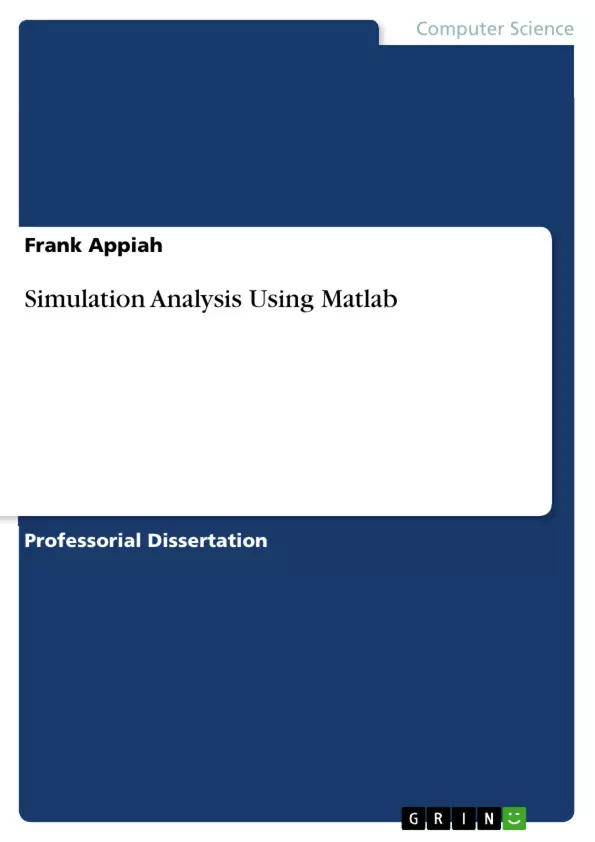This book is about data analysis on profile data captured from the profile run of a cyber-intelligence simulation program called cyberintell. Profile run is about running a state-based task or process switch in a procedure with arguments at run-time. The program on execution takes the state-based task with its arguments and automatically switches to the exact process to execute. The profile module of C/C++ is used in the scripting language, Python. This book considers about 13 tasks of the state-based processes in the simulation of the cyber-intelligence program. A randomized and structured inputs are used to automate the process of simulation without interruption in modeling the profile statistics. The un-interruption string model used in the approach of simulation is based on randomized inputs-made up of integers or strings. The randomized integers are programmed in the simulation program to select or sub select other program paths to be able to cover all the tasks of each state-based process.This is a field of simulation subject. The profile module has a stimulate procedure in C/C++,that means profiling is as stimulating but stimulating is as profile running. Generally,stimulating is a call on the profile module to run a procedure with a specific state-based task in mind. A profile call is made up of a specific procedure name, here a computer definition in Python language, then a string concatenation of state-based task argument and a comma-separated data input list from the shell or command line.The main program is where the profile module is called. The main computer definition is commented because the profile module creates its own main without joining the main definition running thread. A sampling time called pro-time is initialized on a randomized choice between three different methods namely sampling random range, ranging random value and a fixed value. The code of the main process of the program execution is shown in the Introduction section
Inhaltsverzeichnis (Table of Contents)
- Preface
- INTRODUCTION
- PROGRAM RUN 1 Check Transition Function Profile Analysis
- PROGRAM RUN 2 Check Transition Point Profile Analysis
- PROGRAM RUN 3 Print Transition Profile Analysis
- PROGRAM RUN 4 Show Stored View Profile Analysis
- PROGRAM RUN 5 Show Cause-Effect Model Profile Analysis
- PROGRAM RUN 6 Natural Hierarchy Profile Analysis
- PROGRAM RUN 7 Show Cause-Effect Case Profile Analysis
- PROGRAM RUN 8 Show Book Summary & Chapters Profile Analysis
- PROGRAM RUN 9 Show Main Menu Profile Analysis
- PROGRAM RUN 10 Validate & Verfiy Profile Analysis
- PROGRAM RUN 11 Cyber-Simulation Profile Analysis
- PROGRAM RUN 12 Transition Semantics Profile Analysis
- PROGRAM RUN 13 Logic Program Profile Analysis
- REFERENCES
- INDEXES
Zielsetzung und Themenschwerpunkte (Objectives and Key Themes)
This book delves into the analysis of profile data generated from a cyberintelligence simulation program called cyberintell. The core aim is to examine the performance and characteristics of various state-based tasks within the simulation environment. These tasks are executed by the profile module of C/C++, integrated into a Python scripting language.
- Profile data analysis of a cyberintelligence simulation program.
- Examination of state-based tasks and their execution within the simulation.
- Analysis of profile module performance using C/C++ and Python integration.
- Exploring the use of randomized inputs for automated simulation.
- Understanding the relationship between profiling and simulation within the context of cyberintelligence.
Zusammenfassung der Kapitel (Chapter Summaries)
The book dedicates individual chapters to analyzing the profile data of different state-based tasks executed by the cyberintell simulation program. Each chapter delves into the specific task, its associated arguments, and the performance metrics gathered during execution. The analysis utilizes techniques based on randomized inputs to ensure comprehensive coverage of various scenarios and execution paths.
Schlüsselwörter (Keywords)
This work revolves around the core concepts of profile analysis, cyberintelligence simulation, state-based tasks, randomized inputs, C/C++, Python, and performance evaluation. These keywords highlight the key areas of focus within the book, including the methodology employed for data analysis and the software tools utilized for building and executing the simulation.
- Arbeit zitieren
- Professor (Prof.[E.D.], PGCerts, MSc) Frank Appiah (Autor:in), 2019, Simulation Analysis Using Matlab, München, GRIN Verlag, https://www.grin.com/document/495711



